2023 Spring Festival Compilation
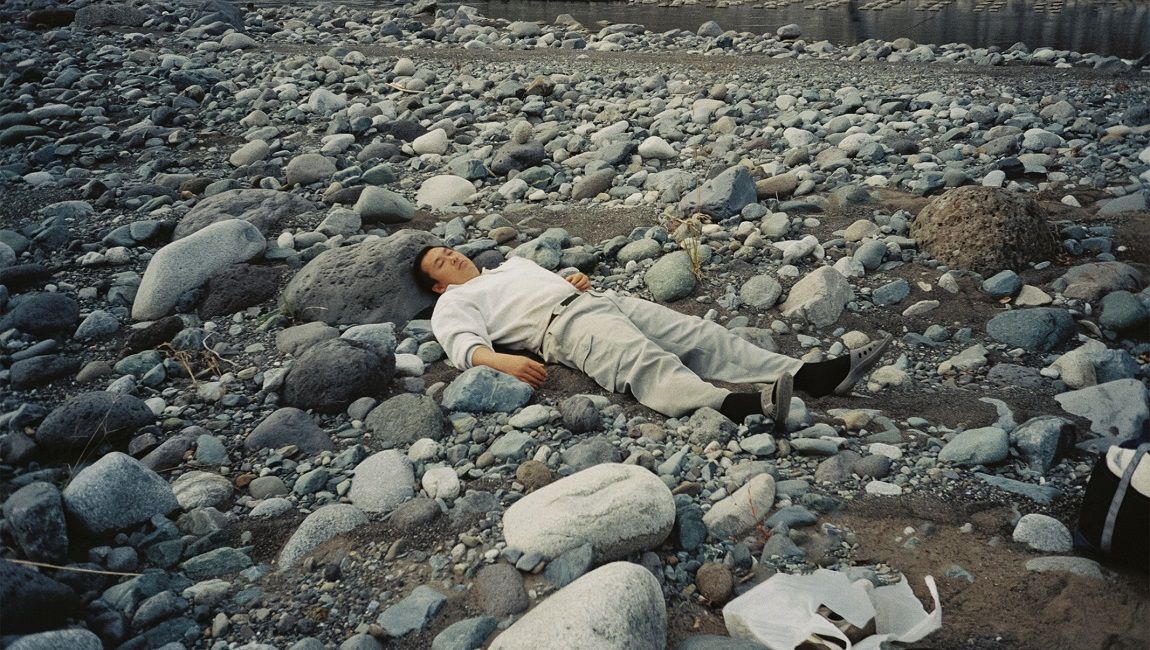
As I put together last year, here is a collection of the reviews I wrote for InReview Online's coverage of various film festivals from around the world so far this year. Check out the rest of the festival coverage at the site, they've got a lot of great writers writing about a lot of movies. In addition to these festival reviews, I've also covered Veronica Ngo's Furies, Ernesto Diaz Espinosa's Fist of the Condor, Shinkai Makoto's Suzume, and Ma Dong-seok's The Roundup: No Way Out for InRO so far this year.
There is a Stone (Ota Tatsunari) - February 16, 2023
A young woman from Tokyo finds herself in a strange town. In the beginning, she is looking for a tourist site, the ruins of an old castle perhaps, but all she finds are empty fields. Wandering around, she’s invited to play soccer with some kids, but soon they all go home. Walking along the river, she meets a man who is perhaps too eager to hang around with her, skipping stones, playing with sticks, stacking rocks. They have fun, but there’s an uneasiness to their interactions: no personal information is exchanged, they don’t talk about anything other than the games they’re making up. Eventually, they part, and she gets lost (her phone dies) and she spends the night in some kind of an office. In the morning, she finds a dog and takes it for a walk. Then she takes the train home.
That’s what happens in There was a Stone, but the experience of watching it is something else entirely. Conditioned by narrative—news stories, films, television shows—we keep expecting something weird, or dangerous, to happen to the woman. And she seems to as well. Who is this man? What does he really want? Is he a threat? The two walk along the river for a good hour of this one hundred minute movie, and for most of that time, we are waiting for the familiar plot to kick in: an act of physical aggression if this is a drama or horror narrative, or a bit of awkward dialogue or maybe some jokes if this is a romance or a comedy. But director Ota Tatsunari never gives us those expected moments. The film isn’t any recognizable genre, it doesn’t fit into any preconceived structure (aside from the flat, telephoto images he captures in a 1.33 frame, constricting space yet distorting the relations within it such that things that appear close together are in fact far away). Instead, we’re forced to reevaluate what we’ve seen on its own terms, as a simple series of discrete actions that, like life itself, doesn’t always match the fictional structures we’ve invented to explain and simplify the world.
Our uncertainty is paralleled by the woman’s (neither character is given a name or any information outside of their interactions). She repeatedly tries to separate herself from the man, but usually goes back to him to play some more games. We can’t really know, but we can assume that she’s afraid of him at times, attracted to him at others. The attraction isn’t romantic or sexual, but rather the freedom of children, who can simply walk up to a stranger and ask if they want to play and then just as simply walk away when the sun goes down and it’s time to go home. After they part, we see the man return to his home. Here we think, “Aha! This creep’s perversions will finally be revealed!” But no, he has a nice normal house. He has a lot of books. He drinks tea out of a glass he stores in a china cabinet. He keeps a diary. In it he describes his day, including the interactions we’ve just seen. All he records are the facts: he met a woman, didn’t get her name, they played games by the river, he went home. That’s all there is to it. There really is an innocence to their relationship, but only in retrospect. While watching the movie, we’re always in dread of what horrible action will come next. That it never does should be a lesson to us to take things as they are, experience each moment in life as its own thing, and pay attention only to what is in front of our face. Perhaps that’s what the woman learned, and thus her smile on the train ride home, as she sees the man in the river once more. But maybe not. Who can say what comes next.
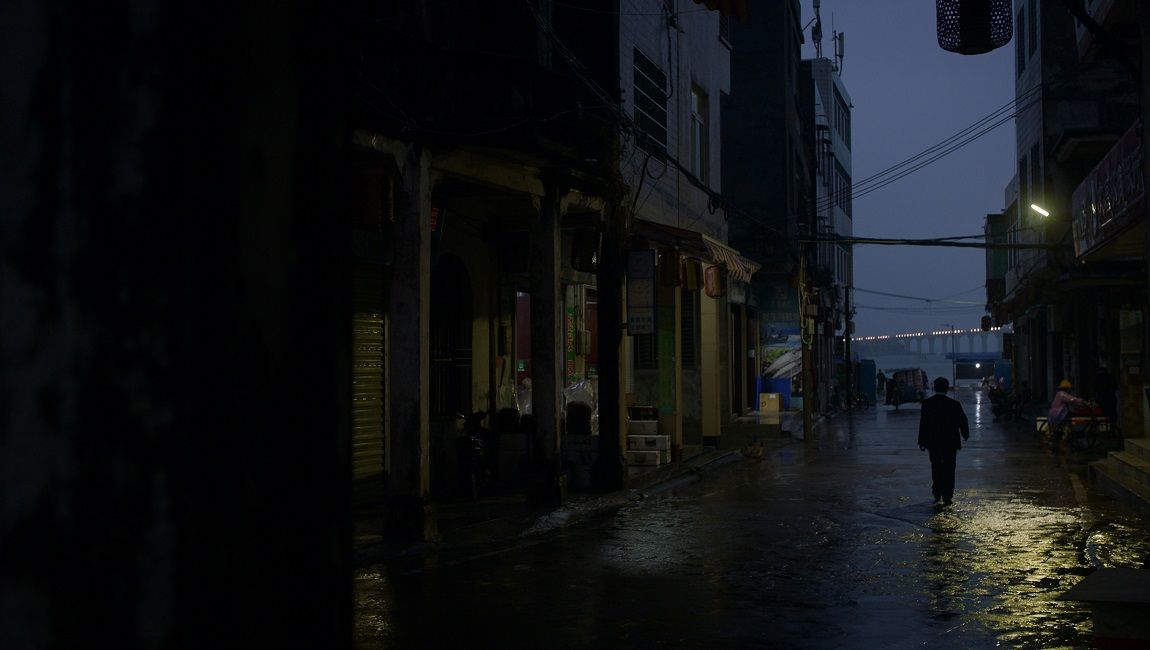
Absence (Wu Lang) - February 14, 2023
The first feature from Chinese director Wu Lang, Absence shares a title and cast with his second short film, which played at Cannes in 2021. I’ve only been able to see the trailer for the short, but it features stars Lee Kang-sheng and Meng Li wearing some of the same clothes they wear in the feature, and looks to have the same emphasis on visual composition over dialogue or plot. In fact, the are no words spoken in the trailer at all. The distributor’s synopsis though gives a hint at the potential relationship between short and feature, in that both are about to former lovers reuniting after some time apart. The short appears to be about a road trip they take: “On the way back to Ying Ge Hai, [they] remain discrete regarding their respective life and tacitly restrict everything to the present.” I’m not sure what that means, but it sounds like a good excuse to set up a lot of moody shots of Lee and Meng looking melancholy in the rain. Not that there’s anything wrong with that.
The feature though builds a bit more of a story. Again, Lee has returned to his former lover Meng. He’s been away from home (the island of Hainan, Ying Ge Hai from the short is an area of southern China near the Vietnamese border and Hainan) for 10 years serving a prison sentence for some kind of a crime, probably covering up for something a friend’s dad did, or at least taking the fall for them. Meng is a hairdresser with a daughter whom she says is not Lee’s, but neither Lee nor us believe her. Meng is attempting to buy an apartment in the city, but the developer (Lee’s old criminal buddy) disappears along with her deposit. So the reunited couple and the daughter move into the apartment anyway, even though it’s nothing more than a concrete ruin flooded and overrun by sheep.
At every turn, Absence appears like it’s going to turn into a kind of a movie we’ve seen before. Its opening half hour or so is told in the static, minimalist style of the Taiwanese New Cinema, with Lee giving yet another performance where he moves slow and barely talks (he is capable of acting like a normal guy: see Ann Hui’s 1999 Ordinary Heroes for proof). He’s wonderful of course: he doesn’t need dialogue, he has a face. His romancing of Meng is patient but determined, though she only comes around when she needs to marry him in order to get the apartment. In this section, where the two come together, the movie shifts to something else entirely. The shots are more expressive, less frontal and tableaux-like, reflecting the characters in mirrors, or isolating them in a single green window pane of an abandoned beach shack. There’s a lengthy sequence where Lee trails her as she leads him out of town wearing a stunning red dress that recalls Wong Kar-wai as filtered through Bi Gan’s Long Day’s Journey Into Night.
But just when we think we’re set up in some kind of romantic noir, with a femme fatale leading the guileless Lee into some kind of revenge scheme against the developer who stole her money, possibly in response to them setting him up to take the fall again, the movie shifts once more into something much more special and original. Lee and Meng, innocent victims of forces larger than themselves which they have no control over or ability to oppose, simply refuse the terms of their oppression and remake their world to their own specifications by reclaiming the complex and turning it into a home. Wu’s images never lose their beauty, but they become more functional, less obviously stylized and systematic, rather finding striking images naturally arising from his environments. He has a particular gift for making the ground look unnatural: undulating mounds of earth at the construction site covered by green mesh, or stalagmite tendrils of mud looking like frozen waves on a tidal flat Lee wakes up on one morning. The unfinished complex is partially flooded, with squares of concrete filled with rain water which the family must carefully navigate to make their way into the building. Somehow these artificial pools become home to fish and tadpoles, just as Lee and Meng make their home in the ruins. Life finds a way.
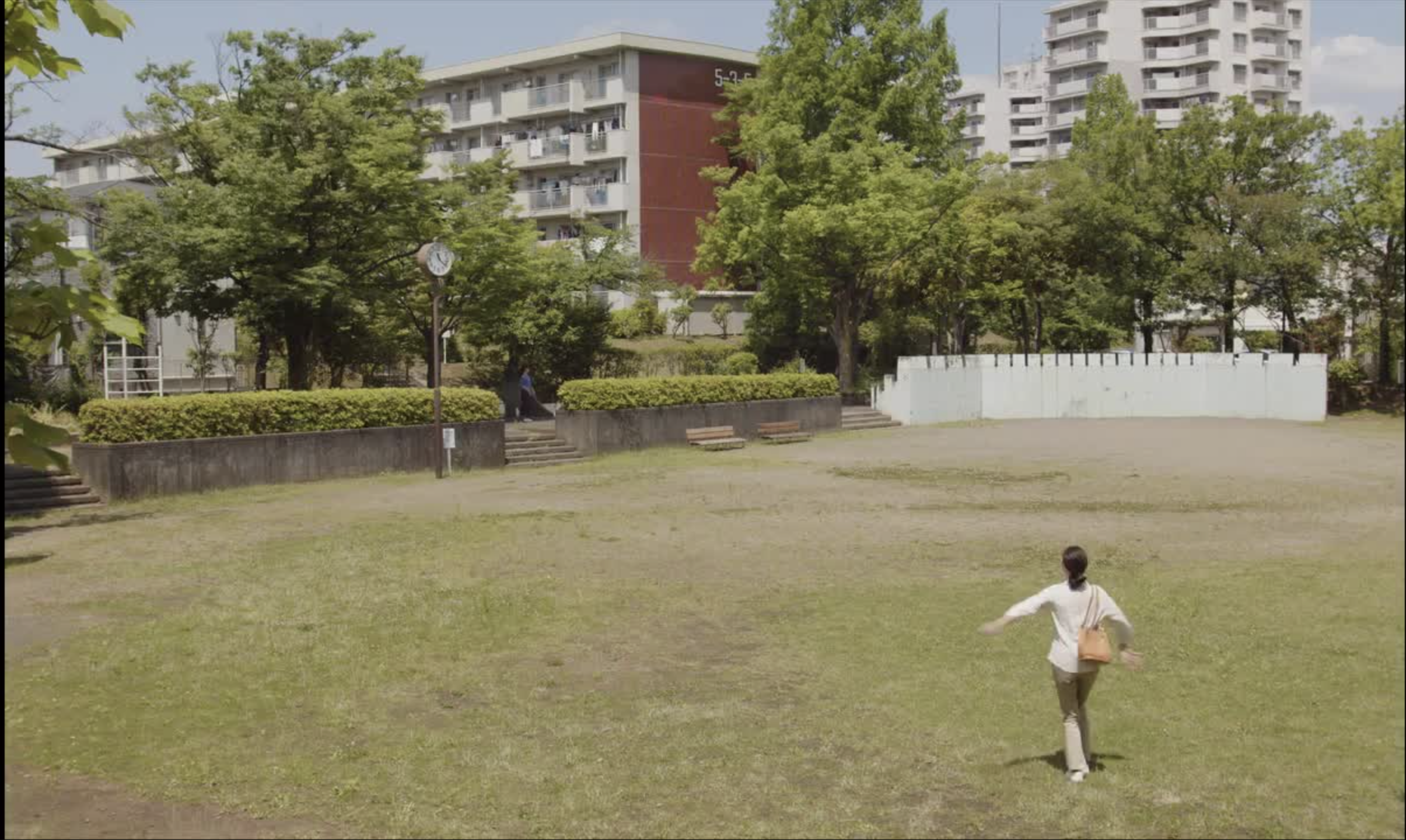
Remembering Every Night (Kiohara Yui) - February 24, 2023
Director Kiohara Yui’s last feature, Our House, which debuted in 2017 and which I briefly reviewed at InRO when it played the New Directors/New Films Festival in 2018, was a kind of a mellow haunted house film interweaving the lives of different women who happen to occupy the same space, though at different times (or in the same time but different dimensions—it's ambiguous). Her long-awaited follow-up similarly charts the lives of not-quite-interconnected women sharing the same space, though this time her world has expanded from a single home to encompass an entire neighborhood. Three women go about their business over the course of a single day in a Tokyo suburb called Tama New Town. The oldest is unemployed and, after finding an old postcard from a friend, decides to go visit her but has trouble finding her place. The middle is a gas meter reader who helps find a lost elderly man and return him to his home. The youngest is a college student who hangs out with a friend as they visit a museum and commemorate the anniversary of the death of a third friend.
Kiohara herself grew up in Tama, and in her Director’s Statement notes the importance of its manufactured environment, “At a glance, there is an artificial uniformity to the city’s scenery that lends it the impression of a manufactured movie set. Apartment blocks and parks seem to extend infinitely, with no way out of the surroundings in sight.” Indeed, the town’s housing complexes, enmeshed in rolling hills and parks and winding roads, form a kind of labyrinth, one that doesn’t so much trap the women as lead to seemingly infinite avenues of discovery. It’s a bright, sunny summer day, one that makes even the oddest or saddest moments feel warm and inviting. An unusual score punctuates the day: odd percussive beats and single-notes plucked on a guitar or keyboard, accompanied by electronic bleeps and bloops that contrast fruitfully with the natural environments we see. It all looks like a beautiful park: trees and lush green grass and the constant hum of insects and chirping birds. But in fact it’s all a creation, a manufactured world.
While superficially similar to this festival’s There is a Stone, in that both films feature not much in the way of plotting or genre familiarity, but rather focus on people hanging out in and walking through a (more or less) natural space, the experience of watching Remembering Every Night is totally different. There is a Stone is defined by the elements it leaves out, the dangers alluded to but which do not come to pass, leaving us in a space in-between dread and relief. Remembering Every Night though is exactly itself: a walk through a neighborhood, inviting us to peek in on a variety of small comedies and dramas along the way. Like a slow-motion, mostly non-verbal Slacker, we get a portrait of a community. Like Sylvia Chang’s 20 30 40, we see women navigating the world at different stages of their lives. Maybe they’re all the same woman. Of course they aren’t, but it’s the kind of thing you could imagine makes sense while you’re sitting under a shade tree on a warm afternoon as you drift off to sleep while the birds sing.
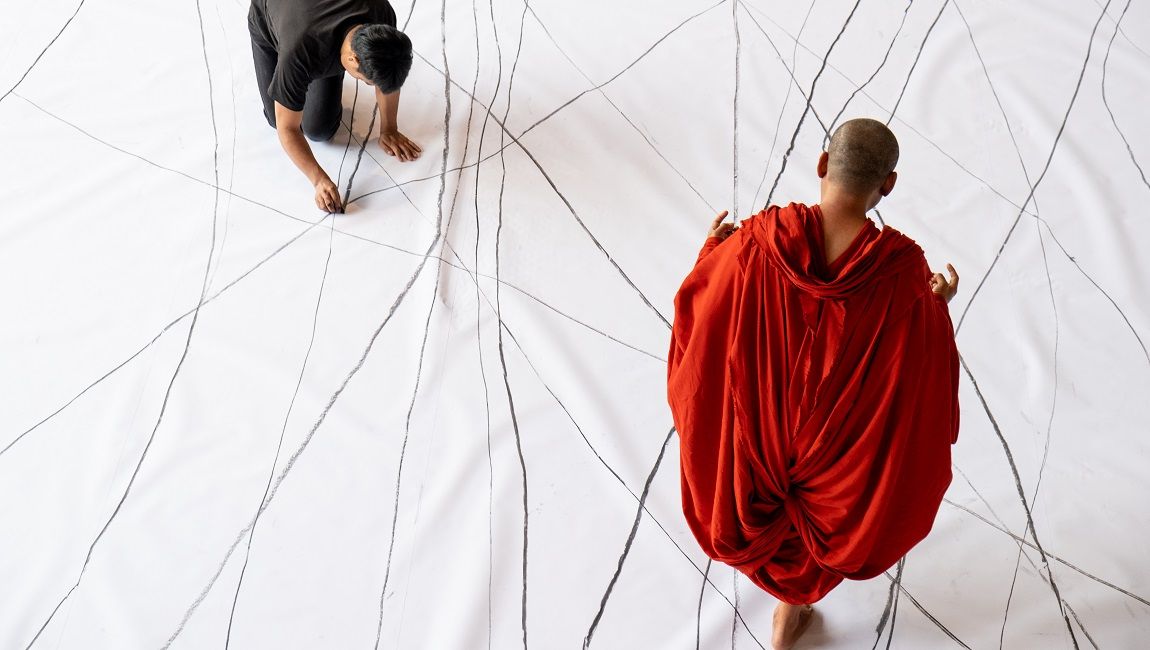
Where (Tsai Ming-liang) - April 28, 2023
One of the more delightful long-running series in contemporary cinema is Tsai Ming-liang’s Walker films, wherein actor Lee Kang-sheng, dressed in flowing red Buddhist robes, walks very, very, verrrrry slowly through the major cities of the world. Now into his second decade of walking, The Monk has been to Hong Kong, Tokyo, and now Paris. In one film, he discovered the Monkey King (Denis Levant) and continued on his Journey to the West to retrieve sacred scriptures. In another, he simply stopped to eat a delicious-looking sandwich or bun of some type. In Where, he finds himself making his way to an art museum, where he encounters a Thai man played by Anong Houngheuangsy, star of Tsai’s recent film Days.
Anong in fact opens the film. We spend the first ten minutes of the movie with him in his home, humming along to himself as first he takes a shower and then performs an elaborate and lengthy facial skin care routine. Only then do we cut to the outside world where The Monk is making his way through the sidewalks of Paris. These opening shots are full of Tsai’s sly humor in composition and editing. One shot gives a nod to the Stonewall Inn. Another opens with The Monk nowhere in sight, only for a car to drive away suddenly revealing his presence (followed by me hooting and hollering: “There’s my guy! Walkin’ slow! Get there buddy!”) One shot, filmed from across a busy street such that vehicle traffic is constantly interrupting our view of The Monk, match cuts from one passing truck to another, revealing a new, closer shot of The Monk. The match on motion gives the impression of a wipe, which is then combined with an axial cut, a combination I can’t recall ever having seen before. One long shot watches The Monk pass along the sidewalk from just off the right-hand edge of the screen all the way to just off the left side. Most of our interest in the shot is of the passersby who top to look at him. Some gawking, some taking pictures, some giving him a sidelong glance and continuing on their way. The punctuation comes from a dog, who exits the screen where The Monk entered it, but not before stopping to urinate on the pavement.
One sequence finds The Monk visible only in reflection ("The world is an illusion! Free yourself buddy!"), and then from behind a metal mesh screen. A reverse shot frees him: he’s now in the open space in front of the screen, followed by a shot that frames him walking across a vast courtyard, while visible in the distance are dozens, if not hundreds of people trapped in plastic tubes, riding escalators and walking up stairs to some kind of large building (it’s the Centre Pompidou), like so many gerbils in a maze, or possibly morsels of nutrients traveling the intestines of Institutional Art. This leads to maybe the most suspenseful shot in any Walker film to date, as The Monk enters the museum via a freight elevator. A low-angled shot introduces deep red walls (matching The Monk’s robes), one of which loudly opens revealing a massive steel elevator door. The Monk is inside the elevator, slowly making his way to the exit. Will he get there in time, or will he be crushed by the automated machinery? Spoiler alert: he survives.
Inside the museum (we see him walk past a large Cubist painting, what looks to me like a sidewalk scene of buildings and pedestrians: looking at things from contradictory perspectives simultaneously, the kind of thing to think about on a long walk), he encounters Anong at last. Throughout the film, shots of The Monk on the street have been interspersed with Anong. We watch him wander around the town, though mostly we see him standing or sitting: looking at his phone, listening to music, eating a sandwich. He looks bored, a little bit lost. Like he’s waiting for someone or something, or he simply doesn’t have anything to do in an unfamiliar city and is just killing time (aren’t we all, even The Monk?).
In the museum we’re introduced to a very large piece of white canvas or some other kind of fabric, laying on the floor of an otherwise empty lobby. It’s the one shot in the film that doesn’t have either The Monk or Anong, at least not that I could see, and I looked very closely. The next shot though shows Anong drawing lines across it with charcoal. Dozens of uneven, shaky, curving or wobbly lines running the length of the material, like a complex system of rivers or wrinkles. Inevitably, The Monk enters and begins walking across it as well, not following any of the lines, neither man acknowledging the other. And then a shocking cut sends us back to Anong’s home, with an extreme close-up of his facial pores (seen through the green goop he applied in the film’s second shot). Is everything we’ve just seen a dream? Once again: the world is an illusion.
The next day (is it the next day?) The Monk is back on the road, continuing his journey through Paris. Anong, wearing a different outfit (white where before he was almost all in black), walks by him and then, a few minutes later, returns to watch him again (a shocking moment when we realize Anong has come back: he sneaks in behind some passersby and is suddenly there in the heart of the image again). A striking composition centers on Anong’s face as The Monk’s head (slowly) passes in front of him. His big eyes are fascinating: confusion, recognition, sadness, longing. The Monk continues on into the crowd. We don’t know where they’re going.
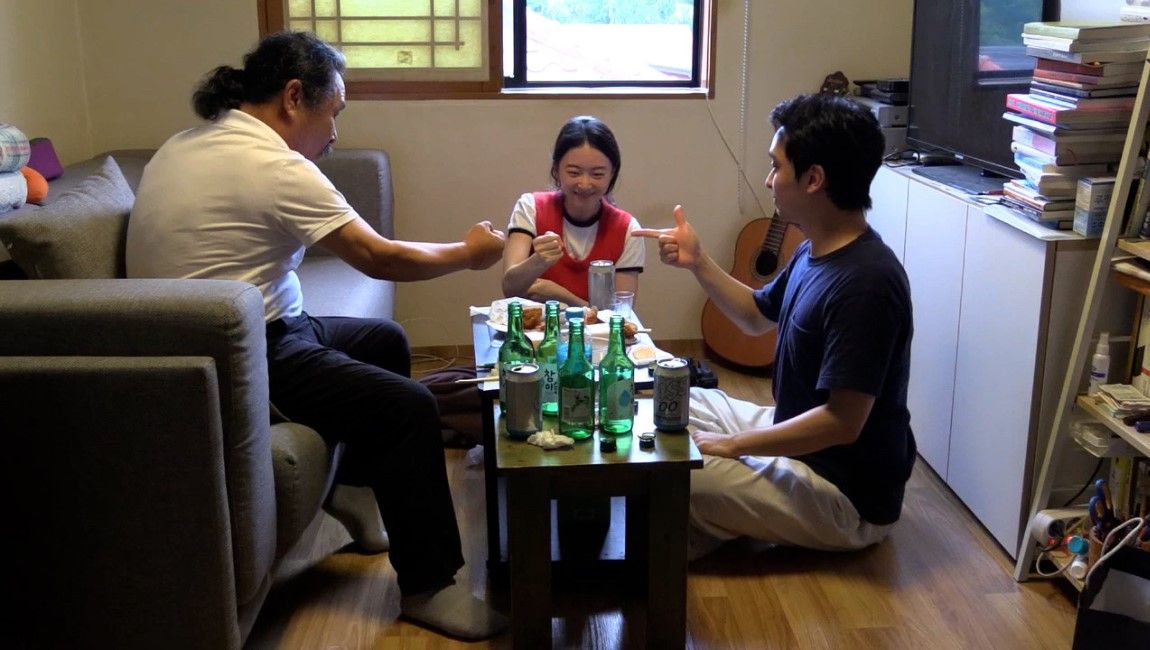
In Our Day (Hong Sangsoo) - May 28, 2023
Hong Sangsoo’s second film of 2023, and his 30th overall in a 27 year career, premiered at Cannes a few short months after In Water played at Berlin. That film found Hong investigating the nature and process of making cinema, both in general and in his own idiosyncratic manner. It was a bit of an experiment of course, being filmed in varying degrees of out-of-focus, and it ends on a note of unsettling ambiguity, with its director walking into the ocean, on camera naturally, like James Mason in A Star is Born. It’s the inverse of the ending of his previous year’s investigation into the nature of cinema, The Novelist’s Film, which concluded with what appeared to be a captured moment of pure love between the director and his star and key collaborator for most of the last decade, Kim Min-hee. In Our Day continues Hong’s meditations on his art, albeit with neither the potentially alienating effects of In Water or the direct and triumphant beauty of The Novelist’s Film. Instead we find Hong in more conventional territory, with a split narrative about younger people asking older artists for advice, and not quite getting answers they find helpful.
The first story stars Kim Min-hee as an actress who has returned to Korea after some time abroad and is staying with an old friend (a designer or model perhaps, or maybe just someone with an impressive collection of shoes). After spending some quality time with the friend’s big fluffy cat named “Us” (later to be the subject of what is now my single favorite Hong zoom shot ever), Kim is visited by her younger cousin, who wants to go into acting and asks the older woman for advice about it. Kim explains that, paradoxically perhaps, acting is about truth, personal inner truth—tapping into yourself with complete honesty and channeling that truth into performance. The cousin says she understands, but I have my doubts.
The second story stars Gi Jubong (Hotel by the River, Introduction) as a renowned poet. A young film student is making a film about him, and he laments to her that he can no longer drink or smoke due to health concerns (as Hong himself has recently had to quit). They’re visited by a young man who, like Kim’s cousin, wants to go into acting. He wants the poet’s advice, though it’s not entirely clear why (I suspect it may have something to do with the pretty documentarian, though she doesn’t seem to know who he is). The young man asks the older one vague questions (what is love, why make art, what is it all for, etc) and gets truthful, but similar to the earlier story, perhaps uncomprehended answers. The scene is very reminiscent of the third film within the film in Hong’s 2010 masterpiece Oki’s Movie, in which two film students ask their professor a variety of questions about life and art and take in his pithy, reasonably profound responses. One of the poet’s answers is even essentially the same as one the professor gives: when asked why he choose to pursue poetry, the poet explains that he doesn’t know, he doesn’t know why he does anything; in Oki’s Movie, the professor claims “In life. . . of all the important things I do, there’s none I know the reason for. I don’t think there is.” This in turn echoes Hong’s recent comments to Dennis Lim at a New York retrospective of his work, as reported in The New Yorker: “The most precious thing in life is always something that is given to me. If I look back on my life, the most wonderful things were always given to me, free or unexpectedly. Never in life did I get something wonderful by trying to get it or with a strong intention.” Instead, as Hong has done in several films recently, the poet asserts a kind of existentialism: what is important is living in the moment, in truly seeing and experiencing what is in front of your face.
So if we combine the ideas central to these two stories, we might have something like Hong and Kim’s Theory of Art: radical personal honesty and emotional truth, combined with an openness to any possible experience of the world and of chance. These theories are put to the test in the second half of the film. The beloved cat Us disappears and his owner is distraught, crying and screaming in anguish, after walking the streets looking for him she comes home and collapses in a heap on the floor, Kim calmly trying to get her to relax and focus on the next step on the search. Song Sunmi’s performance, to this point in tune with the normal Hong register of relaxed naturalism, becomes so demonstrative, the displays of her emotion so extreme (while essentially just lying still) that it pushes the bounds of believability. Is this the honesty Kim advised? Or is the scene effective despite the overplaying, belying Kim’s theory of acting?
Similarly, the poet is faced with a choice. The young man’s questioning gives him a strong urge to drink (a point made by a quite funny intertitle: all the scenes are preceded by such titles, some of which describe what is to come, some of which explain inner thoughts that otherwise are too subtly expressed to be picked up on), and despite the documentarian’s concerns, the man goes out and gets some soju. Several bottles later, the poet introduces Rock-Paper-Scissors to the group as a drinking game, and proceeds to outdrink both the kids. Those two eventually leave together, in a scene that could have come from any number of earlier Hong films (Oki’s Movie, certainly), but we, like Hong much older now than when those earlier films were made, stay with the poet. He sets up on his balcony, armed with a bottle of Johnnie Walker Black, a pack of cigarettes, and what looks like a box of donuts or some other kind of heart-unhealthy snack. Because when your philosophy of life is built around the pleasures of the moment, on living each day in the day in order to experience fully what it means to be alive, it’s really hard to convince yourself to quit smoking.
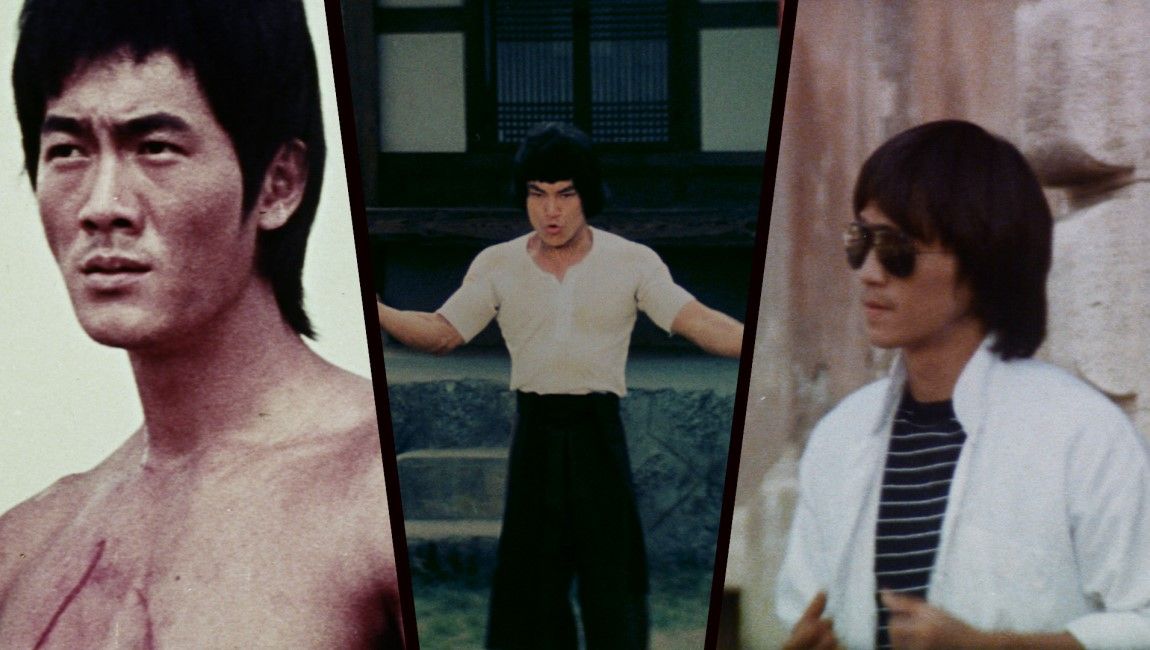
Enter the Clones of Bruce (David Gregory) - June 9, 2023
UK boutique label Severin Films’s documentary Woodlands Dark and Days Bewitched, a supplement to their massive and beautiful box set of folk horror films All the Haunts Be Ours, was one of the great films of 2021. Directed by Kier-La Janisse, the film took a little known and under-explored corner of the horror genre and examined it in minute detail, covering not only the best-known English language titles, but oddities from around the globe. What could have been, in lesser hands, a mere clip reel advertisement for a DVD boxset is turned into an endlessly thoughtful and provocative examination of the genre, how it works and what it means. It’s basically the ideal version of this kind of film.
Enter the Clones of Bruce, Severin’s new documentary, doesn’t quite live up to its predecessor. A study of the Brucesploitation genre, the 1970s phenomenon where in the wake of Bruce Lee’s untimely death a vast array of independent producers and distributors generated a seemingly endless series of imitation Lee films for sale to foreign markets, the film runs less than half the length of Woodlands Dark, but it does include an impressive cast of interviewees, including several of the most popular Lee imitators. Directed by David Gregory, a Severin co-founder, the film does capture something of the chaotic energy of the grindhouse era, one that is interestingly balanced by the ambivalence, in some cases regret, the stars have over their roles in the exploitation of Lee’s persona. Whether the documentary will, like its predecessor, become the centerpiece of a long-rumored box set has yet to be announced, as far as I know, but I certainly hope it will. For as trashy and in some ways downright evil as the genre can be, it was nonetheless one of the most endlessly fascinating and creative cycles in martial arts cinema.
The film starts with a capsule explanation of the state of the Hong Kong film industry circa 1970, with Shaw Brothers and star director Chang Cheh reigning supreme (somewhat surprisingly, former Chang assistant and future king of trash cinema Godfrey Ho is the film’s most fascinating and erudite commentator: I’d like to see a whole documentary of him talking about Hong Kong cinema and his career within and around it). Chang rejects the cocky Lee at his audition, so he signs with the upstart Golden Harvest studio, films a trio of massive hits, then dies just as his Warner Brothers smash Enter the Dragon is about to be released. Almost immediately, the exploitation begins: Golden Harvest head Raymond Chow sends a camera crew to Lee’s funeral, footage that will be recycled endlessly in the films to come. Bruce Li (Taiwanese martial artist Ho Chung-tao) is the first and possibly most prolific imitator, and the one with the most regrets, though dozens more will follow. The film mostly focuses him along with on Bruce Le (Wong Kin-lung, ethnically Chinese but born in Burma and discovered in Macau), Dragon Lee (Moon Kyung-seok, from Korea), and Bruce Leung (sometimes Bruce Liang, probably the most recognizable face among the Bruces, from his comeback performances in Stephen Chow’s Kung Fu Hustle and the 2010 hit Gallants), but there are nods to many others. Kudos to Angela Mao, long-retired from the film industry and now a restaurateur in New York, for agreeing to appear in the film, though her connection to the genre is tenuous at best, relying on her small role as Lee’s sister in Enter the Dragon, a fact repeatedly exploited by unscrupulous marketers for releases of her excellent series of starring roles in films like Hapkido. Kurata Yasuaki, who it is hilariously implied did not known he was frequently billed as Bruce Lo, makes a brief appearance, as does Sammo Hung, director and star of one of the very best Brucesploitation films, Enter the Fat Dragon, as well as choreographer of the Frankensteined epic Game of Death. Most of the film though is made up of clips from dozens of films, emphasizing their outlandish weirdness but also their few basic approaches to dealing with the Lee story.
The genre is made up either of phony Lee biopics, unofficial sequels to Lee films (often involving the brother of the Lee character in the original film), conspiracy films involving investigations into Lee’s actual death, or cheap remixes of existing Lee footage, as in a pair of films cobbled together from his work on the American Green Hornet TV series. In keeping with the spirit of the genre, which was primarily cheaply-produced and targeted at foreign markets, especially the US and France (someone wisely points out that while the Hong Kong industry itself quickly moved on to other established and newly established stars (David Chiang, Ti Lung, Alexander Fu Sheng, Gordon Liu, etc), foreign distributors were only interested in Bruce Lee, or whatever they could get away with deceptively marketing as “Bruce Lee”), all the film footage is presented in its badly dubbed form, on digital scans of prints of various quality, retaining the grindhouse feel that is an essential part of the genre’s scuzzy, illicit appeal. To that end, it’s telling that while the Bruce Lee imitators are all more or less chagrined by their work (the best they can do to justify it is the fact that times were hard and they all had families to support), all the white commentators (British, French, German) are unabashedly enthusiastic about the films, the trashier they get, they more excited they are.
That said, there is value to be found in the Brucesploitation genre, as distasteful as it might be, beyond the camp value of the films’ more outlandish premises and effects. First and foremost, in the artistry of the performers themselves, great screen fighters and stuntmen doing ridiculously dangerous things in the name of mass entertainment (two of the talking heads are legendary stuntmen Mars and Philip Ko, who are always delightful to see and somehow still alive after decades of this kind of work), but also in the way the genre lays bare the ways in which the film industry regards the people who make its products as fungible assets, to be shifted around and replaced and, if necessary, cloned whenever it’s most expedient (see the recent Hollywood trend of digitizing and de-aging its stars as a slightly more technologically adept variation on the Brucesploitation aesthetic). This is the subtext of every Brucesploitation film I’ve ever seen: that bodies, especially the bodies of Asian men, are replaceable assets, to be manipulated on the whims of and for the entertainment of foreign audiences. But within each film lies a contradiction that ultimately negates the power of that system, and that is Lee himself, his image as an actor and as a man standing always in robust defiance of the systems that would demean and exploit him, even after his death. No matter how much the skeevy moneymen and cheap grindhouse operators would try to chop up and mangle and debase his work, they only served to establish more resolutely his indispensability.
